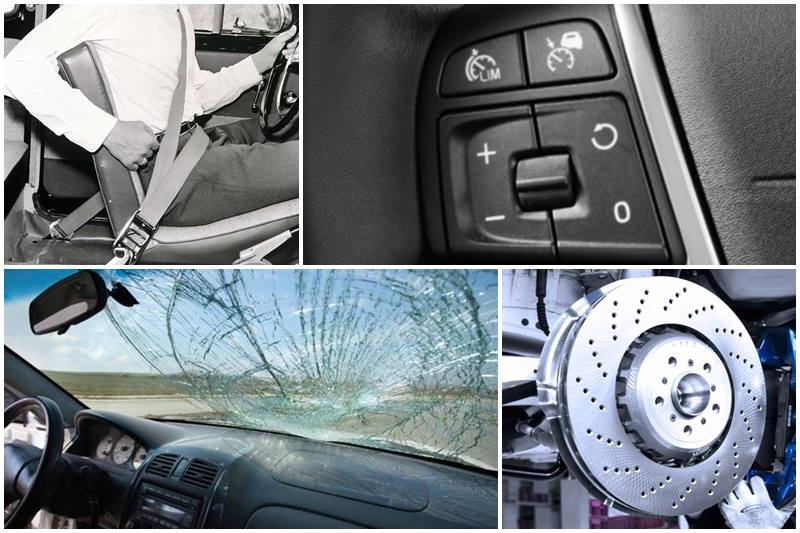-

There are a lot of features in our cars today that we take for granted, for example, power steering, power windows, safety features, etc. But there were days when even seat belts were not mandatory equipment in cars. So, where do all these neat features come from and who are the automobile manufacturers to first introduce them in their cars?
-
Three-point seat belts: Volvo was the first car manufacturer to introduce the three-point seat belt before which cars came only with lap belts in the late 40s. These were not mandatory and most manufacturers opted not to install them. However, SAAB made lap belts part of their standard equipment and in 1959, Volvo introduced the three-point shoulder belts which are now a norm across the entire industry.
-
Power Windows: We do take our power windows for granted today as nearly all cars today have them. But it wasn't very long ago, you had to crank the windows up or down. Packard was the first install electrically operated windows in cars in their 1940s models. The system was heavy and expensive but even so was appreciated by the customers.
-
Anti-lock Braking System: The three-point safety belt was the beginning of safer cars and then in the 1960s, ABS was invented and in 1970s' model Mercedes-Benz cars had them. Who knows how many lives has the ABS saved till date. The system essentially pulsates on the application of brakes in the event of emergencies when the driver applies full brakes. It prevents locking of the wheels and hence provides better control and shortens stopping distances.
-
Airbags: The concept first came in the 50s but nobody managed to successfully design airbags that work until General Motors in the early 70s. They called it the “Air Cushion Restraint System.” It was an option on luxury, full-size Cadillacs, Chevrolets and Buicks in 1973. Later, it became known as the airbag system and today, it is an obligatory piece of equipment.
-
Power Steering: It was not very long ago a lot of cars in India did not feature the power steering which made the steering feel rather heavy since the engine blocks sits up front. It first came in the 1951 Imperial – the firts car to feature hydraulic power steering. (Photo: motor-junkie)
-
Continuously Variable Transmission: The CVT gearbox was first installed in the 1958 DAF 600. DAF is a Dutch truck manufacturer which also built cars at some point. The 600 was a small, economy car with a CVT gearbox. A CVT gearbox is extremely smooth since it does not use typical mechanical gears like other gearboxes do and hence the passengers feel no jolt when it shifts up or down.
-
Disc Brakes: This invention happened in the early years of automobile history but cars had to wait about 50 years before Citroen introduced the DS. The Citroen DS was the first mass-produced cars to features disc brakes. Before disc brakes, all cars came with drum brakes which had proven to be comparatively less effective. When you apply brakes on a car with disc brakes, the calliper on the disc clasps on to the disc to provide much more instant braking. (Photo: BMWUX)
-
Cruise Control: The cruise control was first introduced by Chrysler in their 1958 Imperial model. It created quite a revolution as all other luxury carmakers followed. And today, even economically priced cars, for example the Volkswagen Polo, come with cruise control. The feature adds to convenience and comfort for the driver during long distances as the car does not constantly need throttle input to maintain constant speeds.
-
All-wheel-drive system: The all-wheel-drive system was invented in 1900 but primarily for military and off-road vehicles. In 1966 though, Jensen introduced the FF – sports coupe with a Chrysler V8 and all-wheel-drive. The system makes for more grip, better traction and hence deliver on more control. An all-wheel-drive system is pretty much the reason why drifting a Lamborghini Huracan is mighty difficult.
-
Safety Glass: Car safety glass that shatters into small pieces to avoid cutting passengers has been the standard for decades. But once cars came with real glass which was dangerous in the case of a crash. Tucker Car Company invented safety glass to use on their Torpedo model. The car didn't survive the market for long but the safety glass did. Not just in cars, but in many other items. (Photo: windshieldexperts)
6 Photos